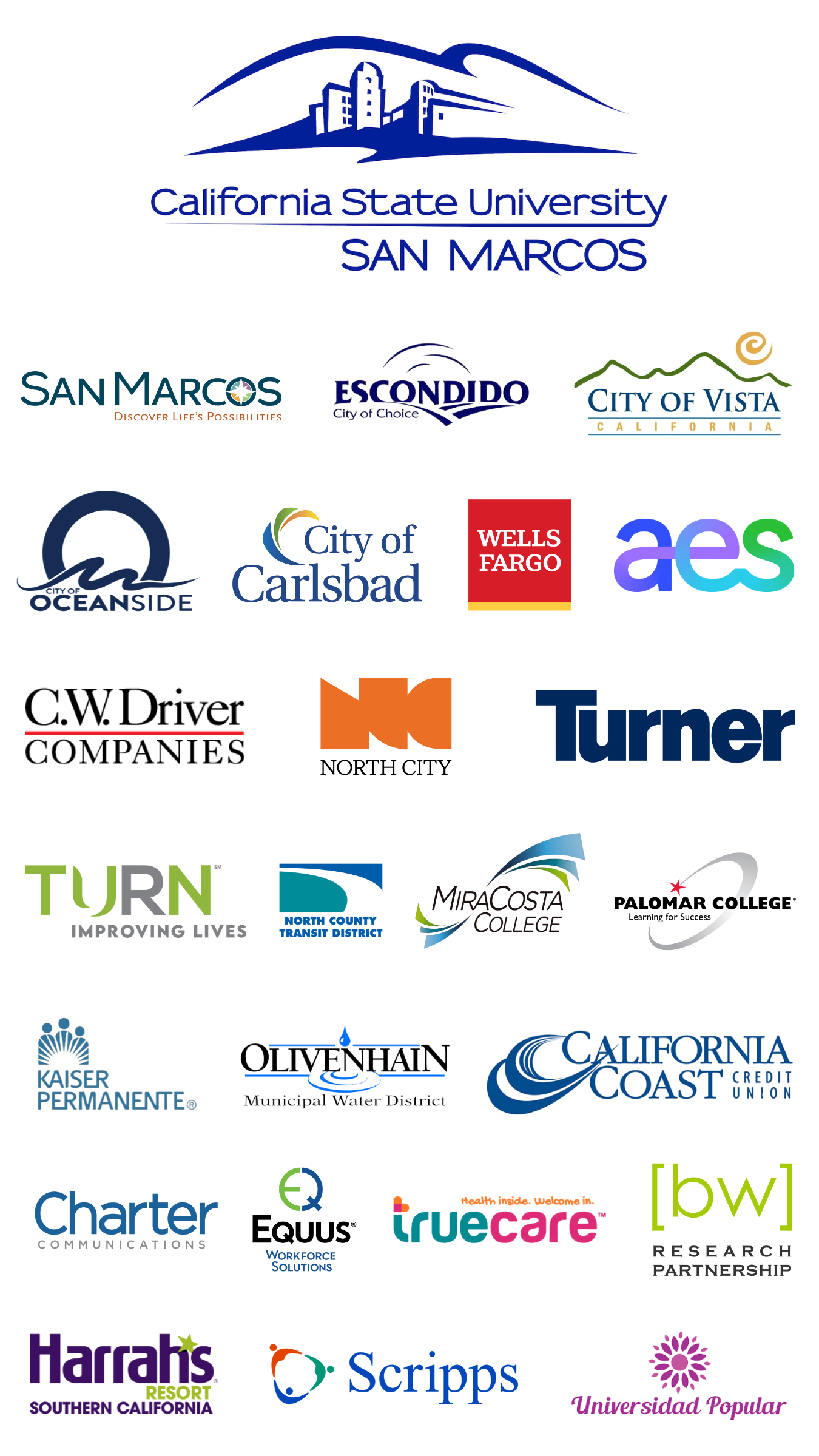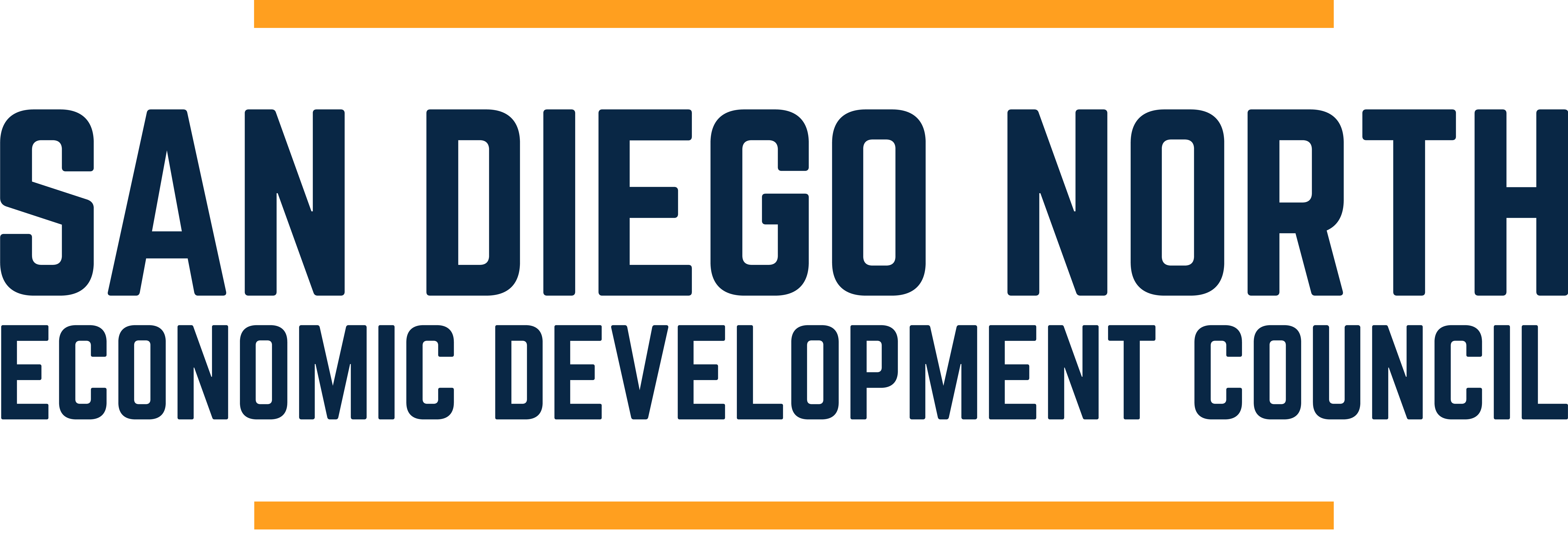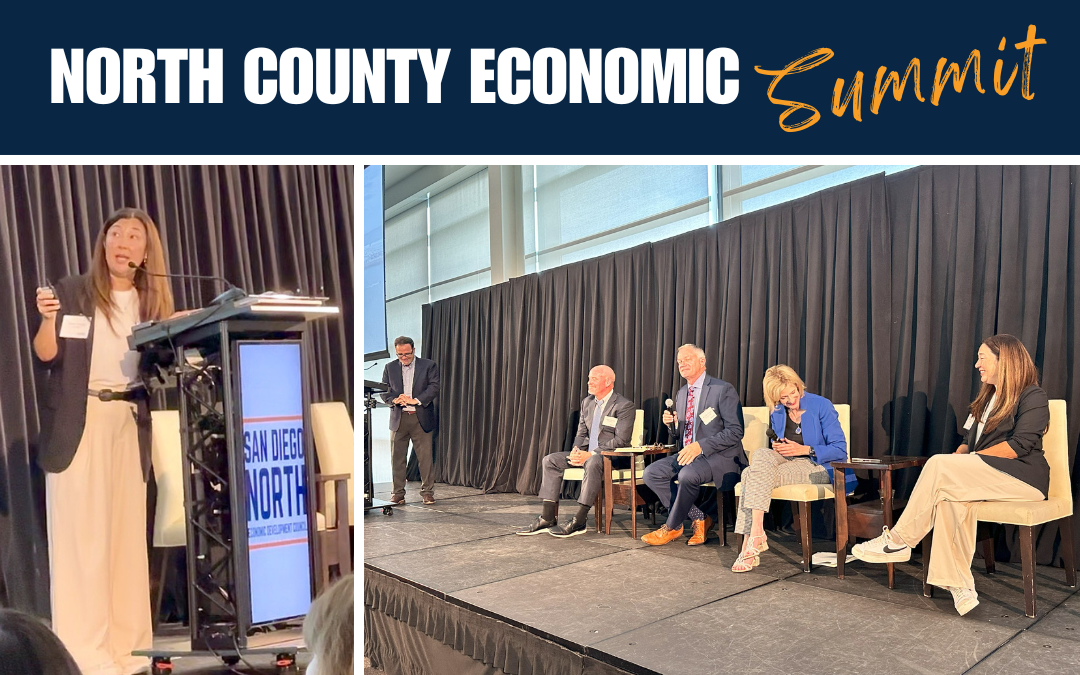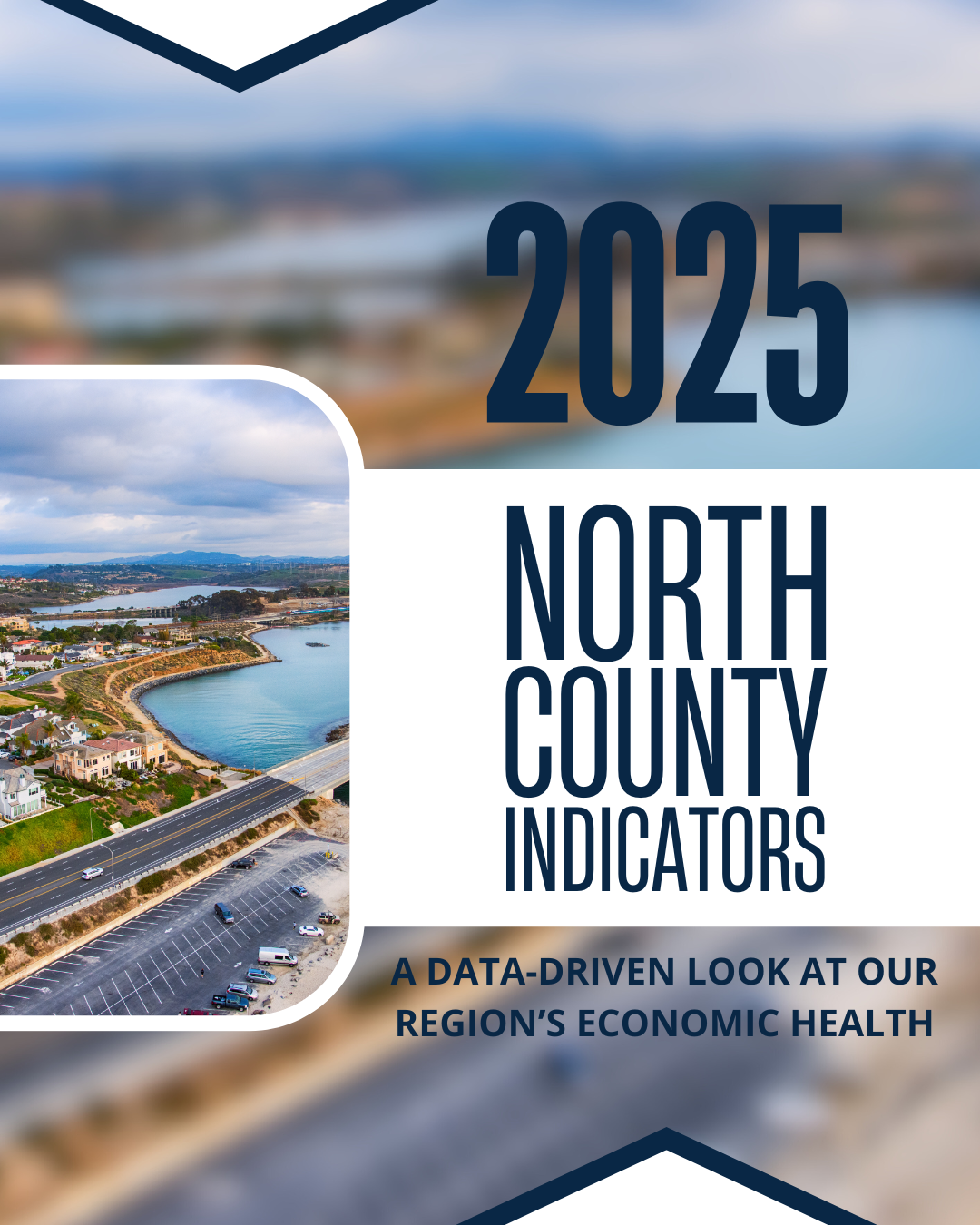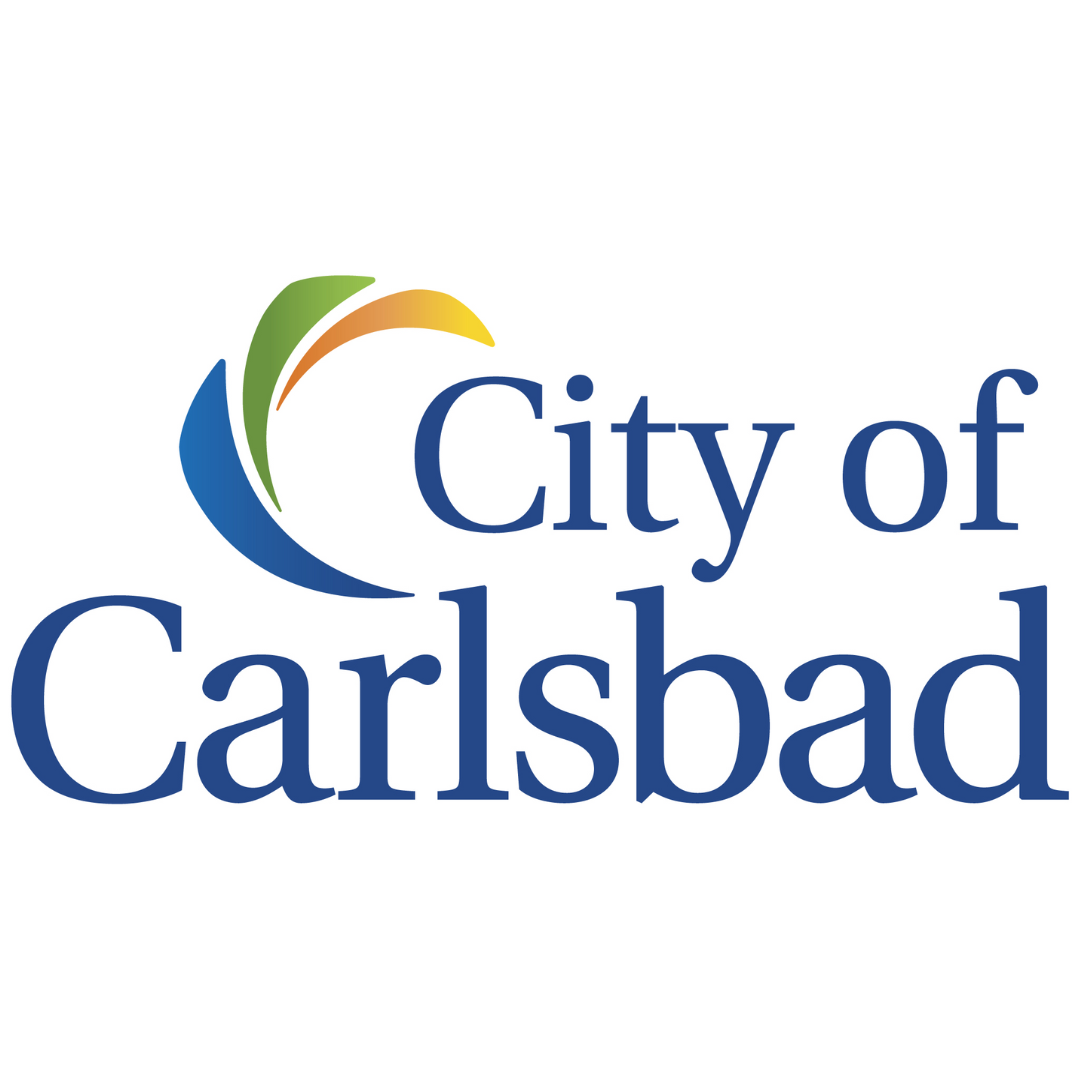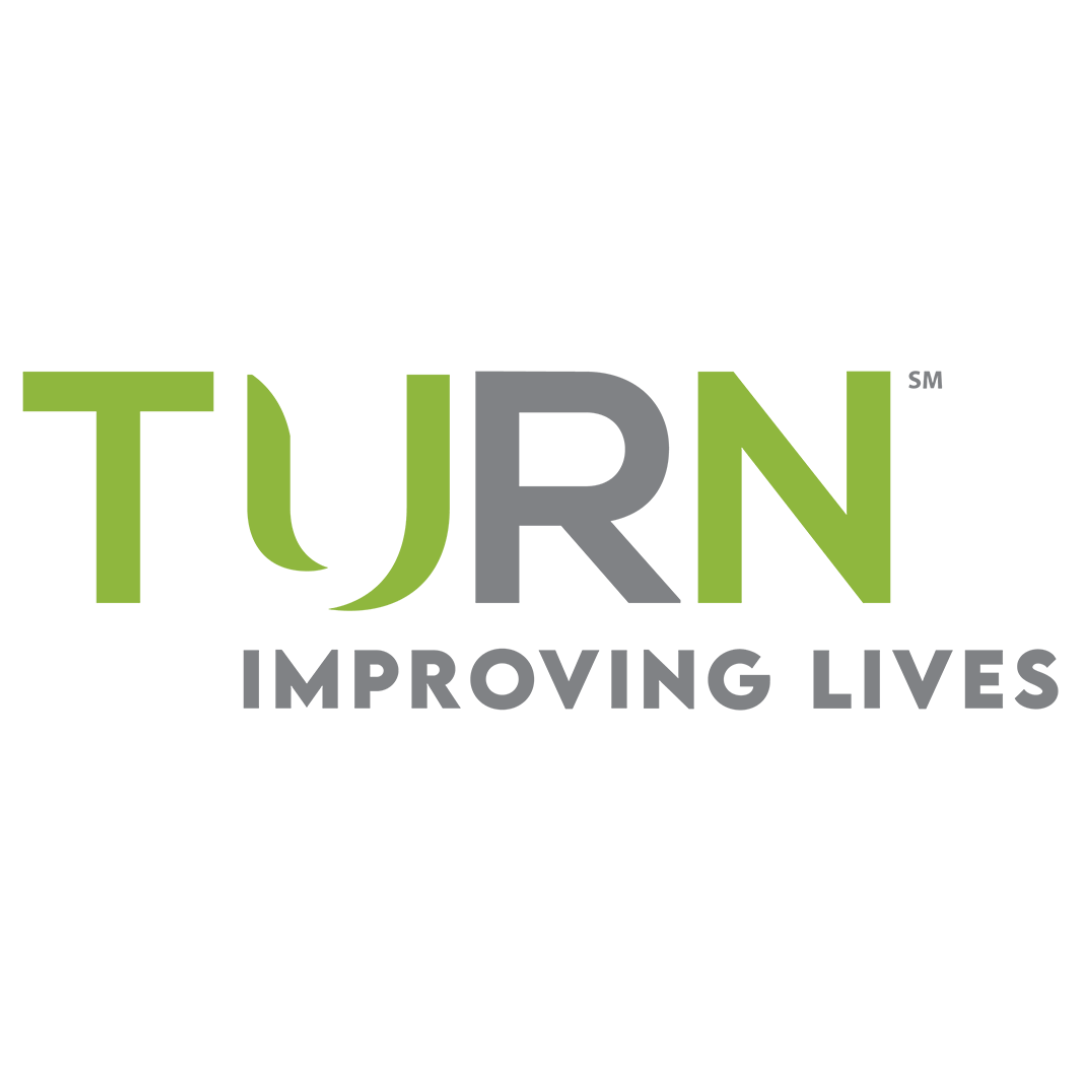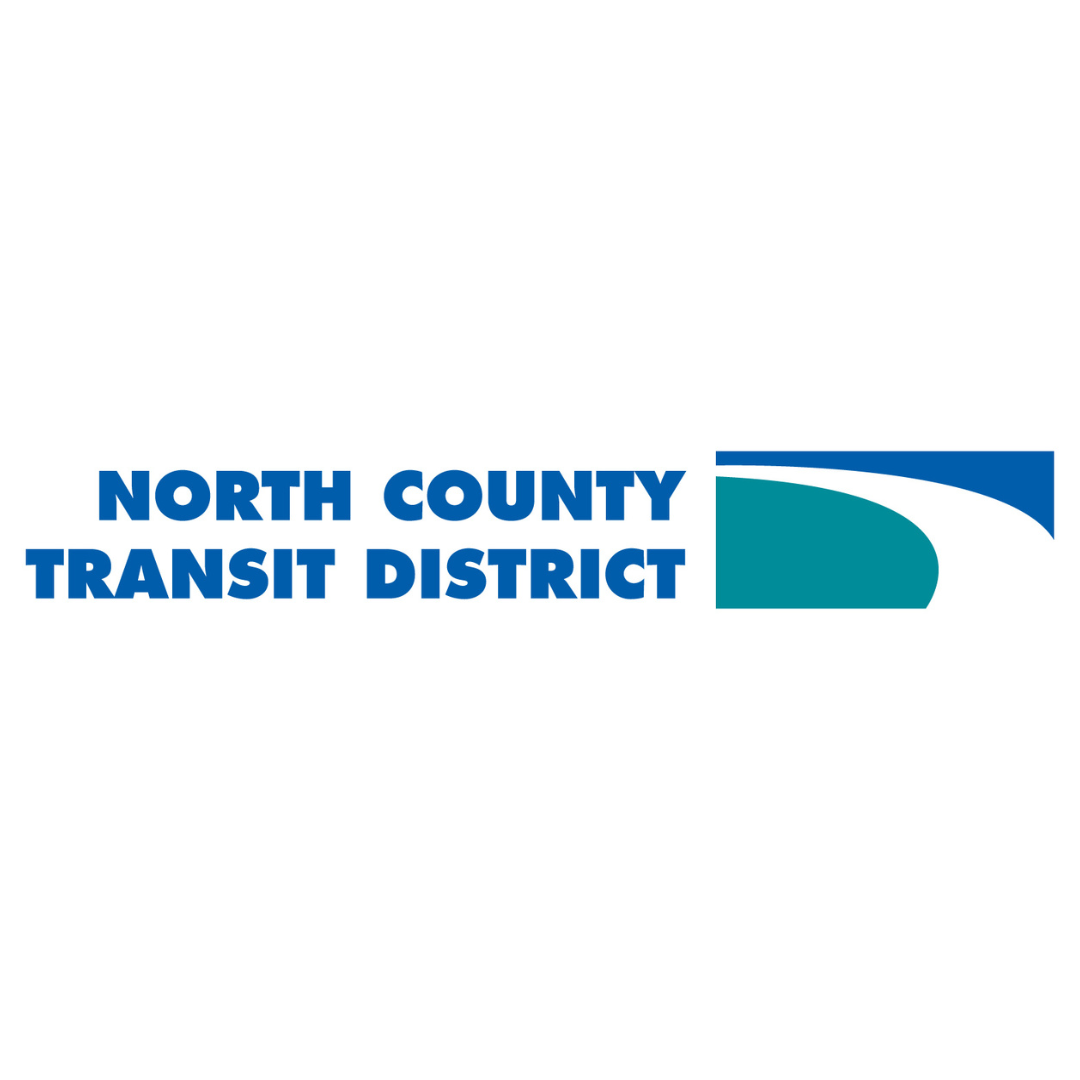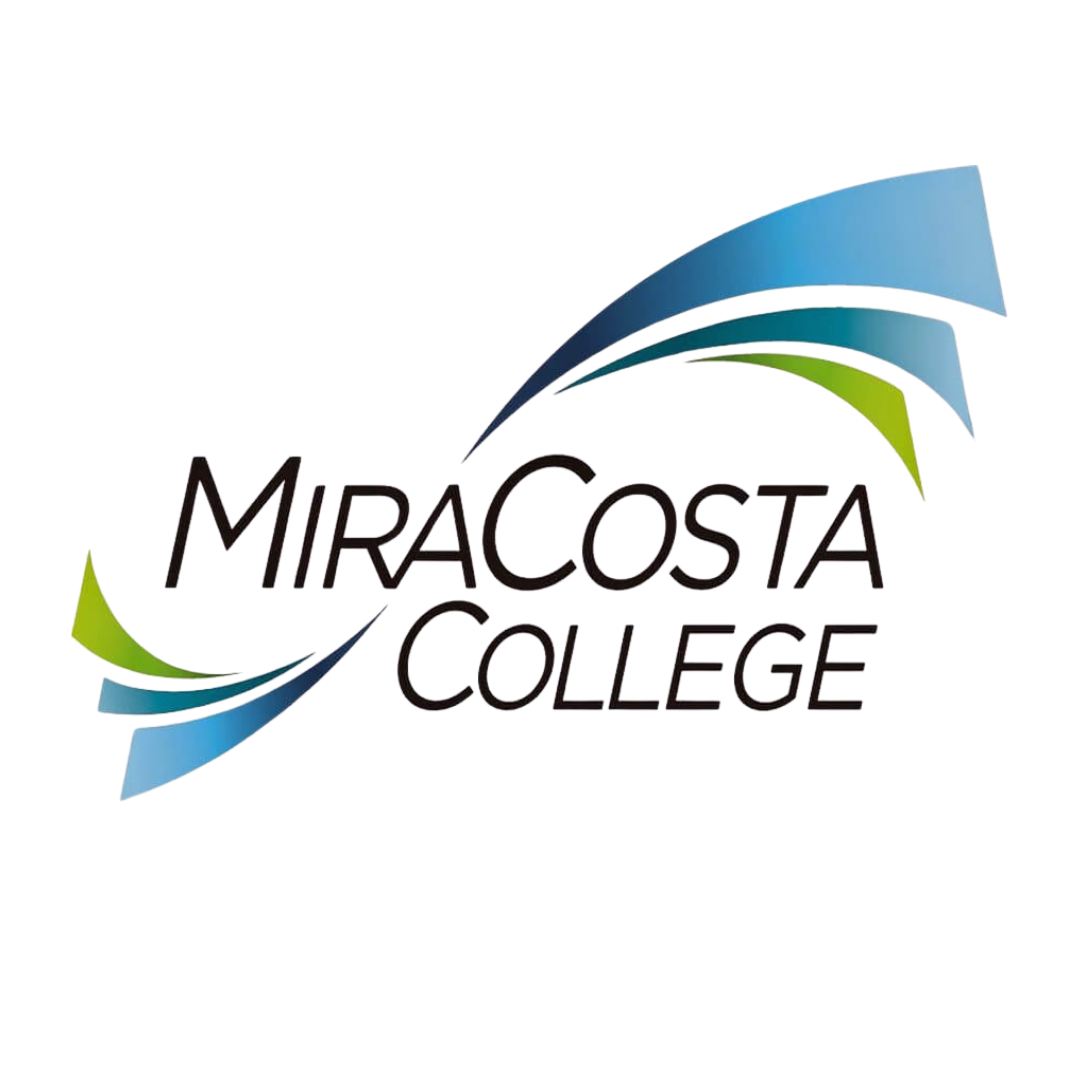Stable but Exposed: North County’s Economic Future Requires Collaboration
Insights from the 2025 North County Economic Summit highlight the need for collective action to sustain North County’s economic resilience amid evolving pressures.
On May 15, the San Diego North Economic Development Council (SDNEDC) convened its 12th Annual North County Economic Summit at California State University San Marcos (CSUSM). With over 320 business leaders, elected officials, and regional stakeholders in attendance, the event offered both a data-rich economic forecast and a deep dive into two of North County’s most critical sectors – healthcare and higher education.
San Diego County Regional Outlook
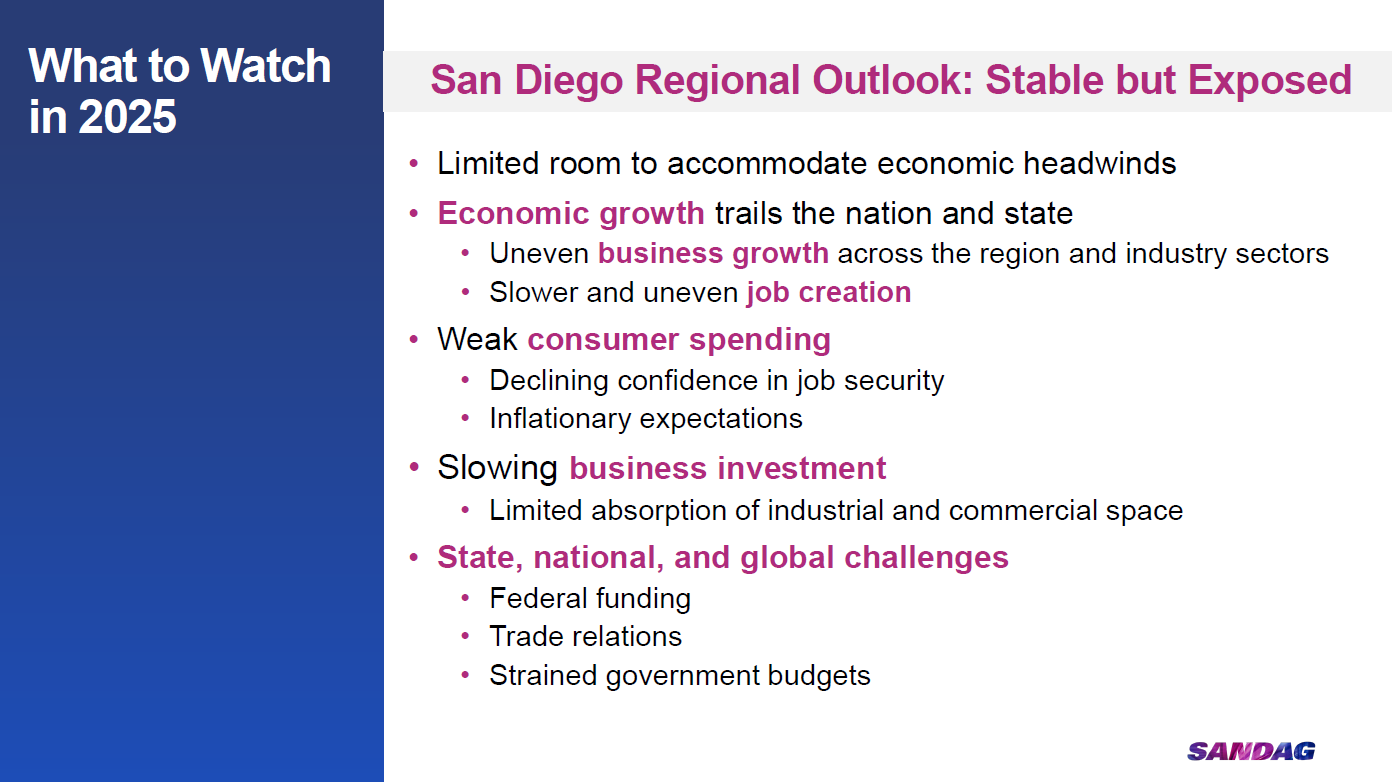
The morning began with a keynote from Naomi Young, Principal Economist at the San Diego Association of Governments (SANDAG), who delivered her first-ever Summit address. With accessible explanations and well-timed humor, Young provided a macro- and micro-level view of the region’s economic landscape.
“We need to be careful when we look at national data points, because they don’t always indicate what is happening locally,” Young said. “San Diego’s GDP shows modest economic expansion, but slower than the state and nation.” San Diego County’s 1.5% GDP growth – though slower than the pre-COVID benchmark of 2.7% – still signals stability.
“The focus is not whether or not we grow, it’s how fast we grow,” she said. San Diego is the 5th largest county in population in California with the 10th largest GDP in the nation. “[San Diego, Santa Clara, San Francisco, and Los Angeles Counties make] up 60% of the California labor market. Out of those, San Diego is the only one that shows consistent job growth.”
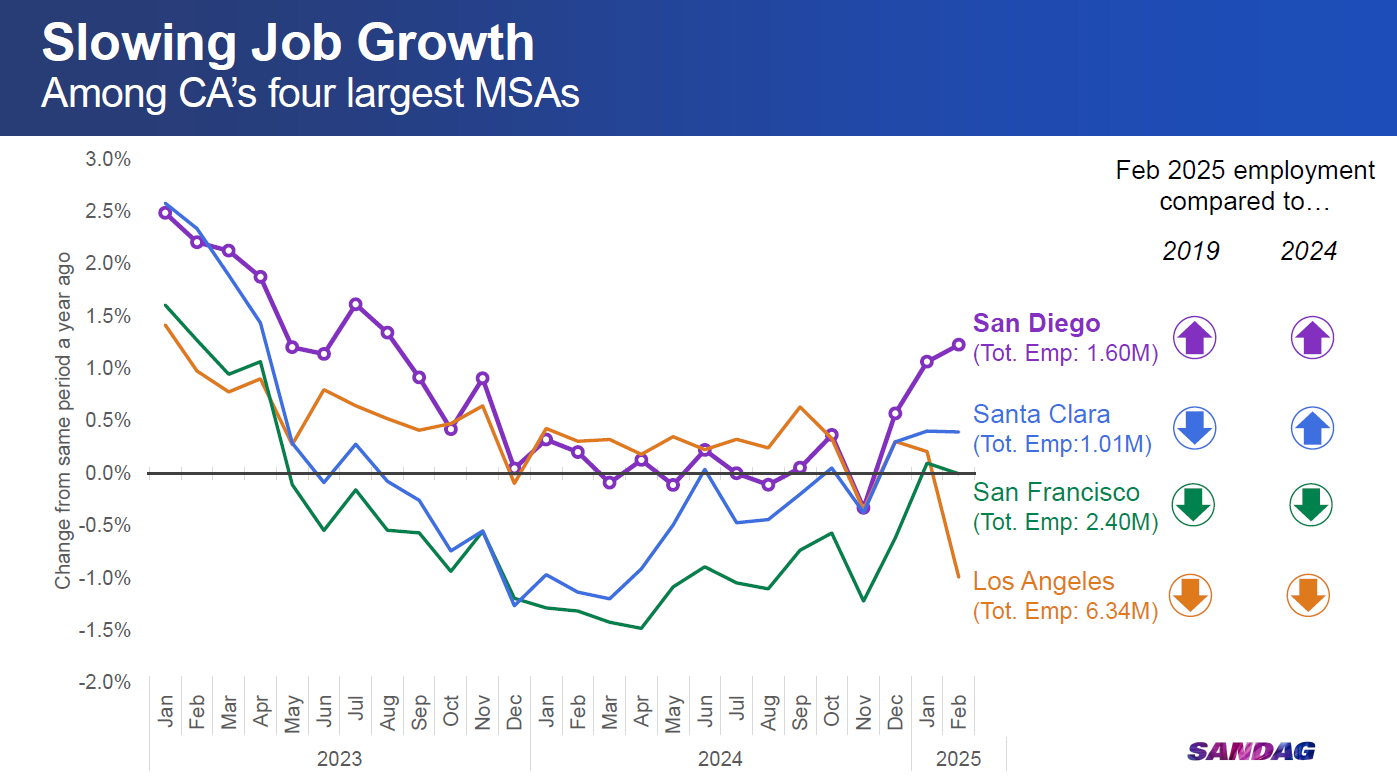
Signals of Growth & Constriction
She noted that consumer spending now makes up 70% of GDP, up from 67%, making consumer confidence a key driver of future growth. And while Q1 2025 marked the region’s first quarter of negative growth, she said it wasn’t so worrisome yet and advised patience.
“We get GDP numbers in San Diego County at a two-year lag, so two years from now, I can tell you where we are,” she said with a laugh, prompting one from the audience, too. Still, there are promising signs – imports rose significantly in early 2025, which suggests we’ll see some GDP growth as those goods move into production and the broader supply chain.
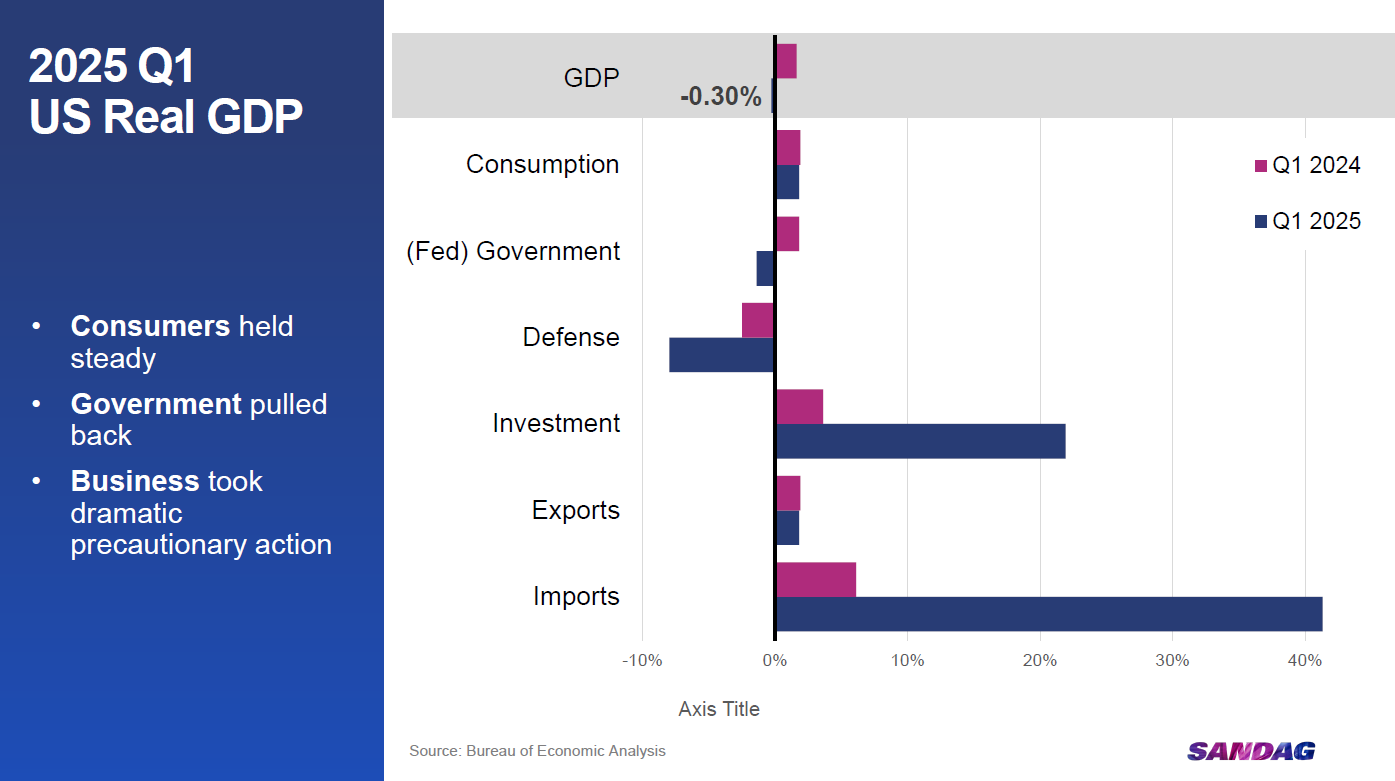
Additionally, regional unemployment rates remain low at 4.4%, a slight increase that eases wage pressure. “A strong labor market translates into strong consumer confidence to weather the storm, which helps with consumer spending,” she said.
Affordability in San Diego County
Young also underscored affordability as a structural challenge in the region. With interest rates still elevated, homeownership costs remain out of reach for many, and median wages struggle to keep up. One tactic she suggested is supporting businesses that provide family-sustaining wages, while also acknowledging shifts in generational views on wealth and homeownership.
“The younger generation has a different idea of homeownership and how they want to build their wealth,” she noted. “We don’t need to lean into things the way they were 10–20 years ago.”
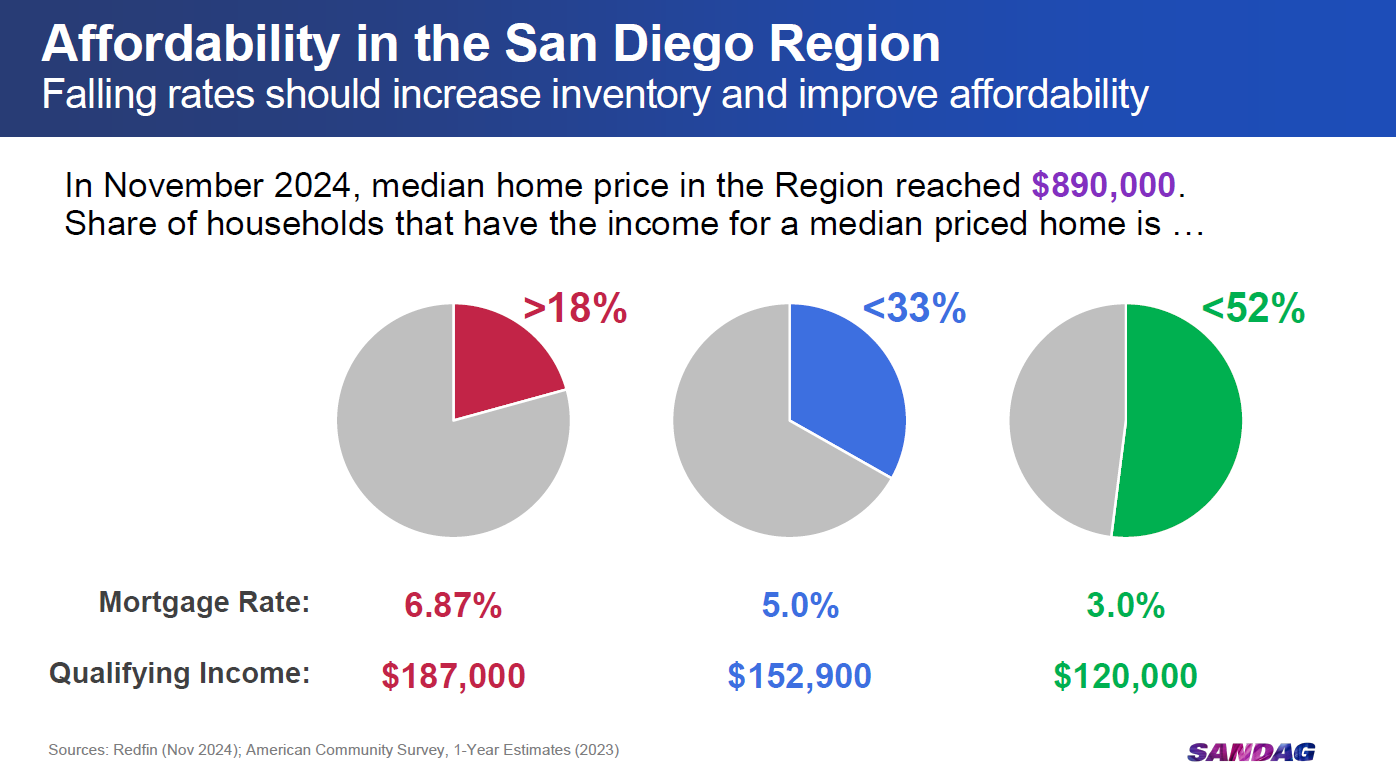
Executive Insomnia: What Keeps Healthcare Exec’s up at Night?
Following the economic outlook, the Summit transitioned to a panel discussion moderated by Josh Williams, President of BW Research. The panel brought together Richard Neale, Corporate Executive Vice President of Scripps Health, and Dr. Ellen Neufeldt, President of CSUSM, to examine the current landscape and shared challenges within healthcare and higher education.
While so many recent healthcare innovations offer unprecedented value to patients, Neale was candid about the financial strains they and other factors create. He shared what causes “Executive Insomnia,” or things that keep healthcare leaders up at night: “Uncertainty and a lack of financial awareness in the marketplace,” he said.
Neale described a funding structure where Medical and Medicare reimbursements fall far short of hospital costs (especially in emergency services, for which income is at least one-third below costs) forcing commercially insured patients to make up the difference.
North County’s Aging Population
North County’s aging population also places increasing pressure on the region’s healthcare system, and the financial implications are significant. As more residents become eligible for Medicare, healthcare providers are left to bridge a growing funding gap. The blame for the Medicare reimbursement challenges, he emphasized, should not be placed on the patients, as it is out of their control.
“What can we all do to support this growth? We want everyone to be successful. Stable, well-paying jobs – that creates growth,” Neale said, noting that 188 CSUSM students were placed in Scripps Health jobs over the past year.
The region’s ability to meet this projected growing demand (an estimated 20,000 individuals with medical credentials annually) will hinge on building a robust pipeline of trained healthcare professionals who can step into these roles. Higher education institutions are central to this effort.
Industry Partnership is Critical
“It’s so important to support students if we all want nurses as we age and we need them,” said Neufeldt. “Where the community can help be a driver is understanding that we go hand in glove with industry. We need placement for nurses to be able to educate them. The ecosystem matters so much, now more than ever.”
She also stressed that practical experience is one of the most reliable pathways to employment: “The number one way to guarantee a student has a job when they graduate is having an internship while they are in school – learning while doing – so partnering to offer these internships is so important.”
Finances, Demographics & Higher Ed
Speaking of evolving demographics and fiscal constraints, Neufeldt shifted to how these challenges affect higher education. With fewer young adults entering college and the workforce, institutions face reduced enrollment revenue, diminished public funding, and a shrinking pipeline of highly educated professionals to fill critical roles.
“People stopped having babies in the 80s and 90s, and I need you to start again desperately! Go use the hospitals!” she joked. But the demographic shift is real, and so are budget challenges. “We got some great news yesterday. We didn’t get catastrophic cuts from the State of California – just terrible cuts – and I want to thank the governor for that.”
Neufeldt also emphasized the economic ripple effects of educational investment. “To an individual, [a college degree] is worth about $2.8 million in their lifetime,” she said. Without adequate support, the region loses not just students, but future teachers, nurses, and innovators. “Our country was set up decades ago that the innovations and research would happen at the universities, and that is in jeopardy right now,” Neufeldt said.
Collaboration Key to Future Workforce
Despite the challenges, both Neale and Neufeldt remain very optimistic about the future of their industries in North County.
“A lot of the changes in healthcare are great, and the healthcare ecosystem in North County is phenomenal,” Neale said.
“We are the ‘University of Place,’ serving the local community in North County and all of San Diego County,” Neufeldt said. “Our community colleges and 4-year universities in the region are great partners.”
Young’s final thoughts revolved around the importance of adaptability in the workforce: “We need to right-size our pathways and what career progression looks like. Train people to not just specialize but to adapt and move across industries.”
Williams closed the panel with a call to think differently about workforce development. “Jobs are about what you can create, design, and develop. We need to create entrepreneurs.”
2025 North County Indicators Report
Throughout the morning, SDNEDC reinforced its commitment to data transparency and informed dialogue. This year’s release of the 2025 North County Indicators report provides a comprehensive, easy-to-navigate snapshot of the region’s economic health, designed to help stakeholders reference key metrics throughout the year.
As North County continues to evolve, the Summit’s message was clear: building a prosperous, resilient region means confronting economic realities head-on, together.
For updates about this and other San Diego North County business events, subscribe to our newsletter here.
For more information about sponsorship opportunities for next year’s Summit, email Caitlyn at ccanby@sdnedc.org.
About the Author

Caitlyn Canby loves to discover and share people’s stories. She has her bachelor’s degree in Communications with over 10 years of journalism experience. An Escondido native, she lived on Catalina Island off the coast of Long Beach, CA before moving back home to North County. Caitlyn enjoys collaborating on projects as Chief Operating Officer at SDNEDC, traveling internationally, gaming, and exploring new restaurants, venues, experiences, and cultures.
Thank You to Our 2025 Sponsors
